for an assignment for school, we are to draw out the UNL,1NF,2NF,3NF relations for a table we are provided. I think i was able to complete UNL,1NF,2NF but i was not sure how to do that for 3NF.
Here is a picture of the table:
Here are my possible solutions missing 3NF.
UNF Relation
ProductReport[ProductC, Classif, Markup(ProductID, Desc, Cost)]
1NF Relation
ProductReport[ProductC, Classif, Markup]
ProductDetails [ProductC, ProductID, Desc, Cost]
2NF Relation
ProductReport[ProductC, Classif, Markup]
Product [ProductID, Desc]
ProductDetails [ProductC, ProductID, Cost]
3NF Relation
So my question is, Is my UNF,1NF,2NF correct? and if yes, how would 3NF look?
